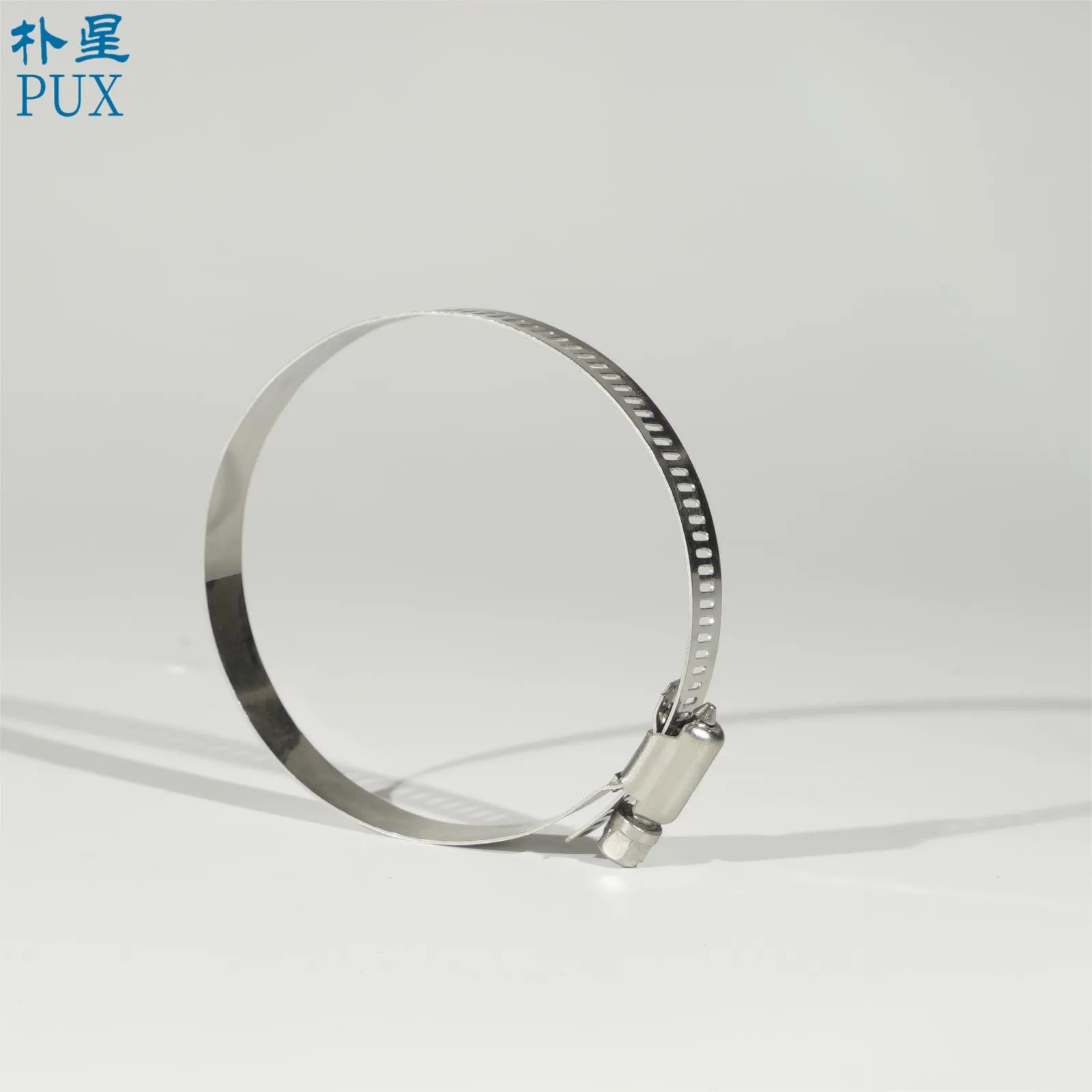- Phone:+86-17331948172 +86-0319-8862898
- E-mail: inquiry@puxingclamp.com
Dec . 12, 2024 14:50 Back to list
different kinds of hose clamps factory
Understanding Different Kinds of Hose Clamps A Guide
Hose clamps are vital components in a multitude of industries, serving an essential function in connecting and securing hoses to fittings, pipes, and other equipment. Their importance cannot be understated, as they ensure a proper seal to prevent leaks and maintain pressure within systems. With various designs, materials, and sizes available, understanding the different kinds of hose clamps produced by manufacturers can greatly help in selecting the right component for specific applications.
Types of Hose Clamps
1. Screw or Worm Gear Clamps These are perhaps the most common type of hose clamps. Made from stainless steel or zinc-coated steel, they feature a screw mechanism that allows for tight fastening around the hose. The worm gear design provides a strong grip, making them suitable for high-pressure applications. They are often adjustable, allowing for easy installation and removal.
2. Spring Clamps Spring clamps, also referred to as constant tension clamps, utilize a spring mechanism to maintain a secure grip around hoses. They automatically adjust to fluctuations in temperature and pressure, making them ideal for applications that experience thermal expansion and contraction. These clamps are prevalent in automotive and industrial applications where reliability is paramount.
3. Squeeze Clamps Squeeze clamps are designed for use in flexible tubing systems. Their simple design allows for easy installation without the need for tools. These clamps work by compressing the hose, creating a secure seal. However, they may not be suitable for high-pressure applications, as they don’t provide the same level of grip as screw clamps.
4. Bolt Clamps Bolt clamps are often used for larger hoses and pipes where high pressure or large diameters are involved. They feature a sturdy design that requires bolts for tightening, ensuring a secure and stable fit. Due to their robust construction, these clamps are frequently employed in heavy-duty industrial applications.
5. Pliers-Style Clamps Used primarily in automotive settings, pliers-style clamps require a pair of pliers to install or remove. They are made from materials that can withstand high temperatures and pressures. These clamps are effective for low-profile applications where space is limited.
6. Flange Clamps Flange clamps are designed specifically for joining segments of hose and pipe with a flanged end. They provide an airtight seal and are often used in applications where a leak-free connection is mandatory. Their design allows for easy disassembly, making maintenance straightforward.
different kinds of hose clamps factory

7. T-Bolt Clamps This type features a T-shaped bolt that provides even pressure around the hose, making them ideal for high-performance applications, such as in automotive or marine engines. T-bolt clamps can withstand high levels of stress and are known for their reliability.
Choosing the Right Hose Clamp
When choosing a hose clamp, several factors should be taken into account
- Application Requirements Consider the specific conditions under which the clamp will be used, such as pressure, temperature, and the type of fluid. - Material Compatibility Ensure that the material of the clamp is compatible with the hose material to avoid corrosion and degradation.
- Size The size of the clamp should match the diameter of the hose to ensure a proper seal.
- Ease of Installation Some clamps may require specific tools for installation, while others may be more user-friendly.
Conclusion
In conclusion, selecting the right hose clamp is critical for ensuring the efficiency and safety of fluid transport systems. Understanding the different types of hose clamps available from manufacturers allows for informed decisions that can lead to improved performance and reduced maintenance costs. Whether for automotive, industrial, or household applications, the right hose clamp can make all the difference in achieving a secure and leak-free connection. With ongoing advancements in materials and design, hose clamps continue to evolve, meeting the ever-changing demands of various industries.
-
High Quality Precision Stainless Steel Strip - GPT-4-Turbo Grade
NewsAug.02,2025
-
Heavy Duty Hose Clamp | Premium Durability & Security
NewsAug.01,2025
-
Large Stainless Steel Adjustable American Type Hose Clamp - Hebei Pux Alloy Technology Co., Ltd.
NewsAug.01,2025
-
Large Stainless Steel Adjustable American Type Hose Clamp - Hebei Pux Alloy Technology Co., Ltd
NewsAug.01,2025
-
Large Stainless Steel Adjustable American Type Hose Clamp - Hebei Pux Alloy Technology Co., Ltd.
NewsJul.31,2025
-
Large Stainless Steel Adjustable American Type Hose Clamp - Hebei Pux Alloy Technology Co., Ltd | Corrosion Resistance, High Torque
NewsJul.31,2025




